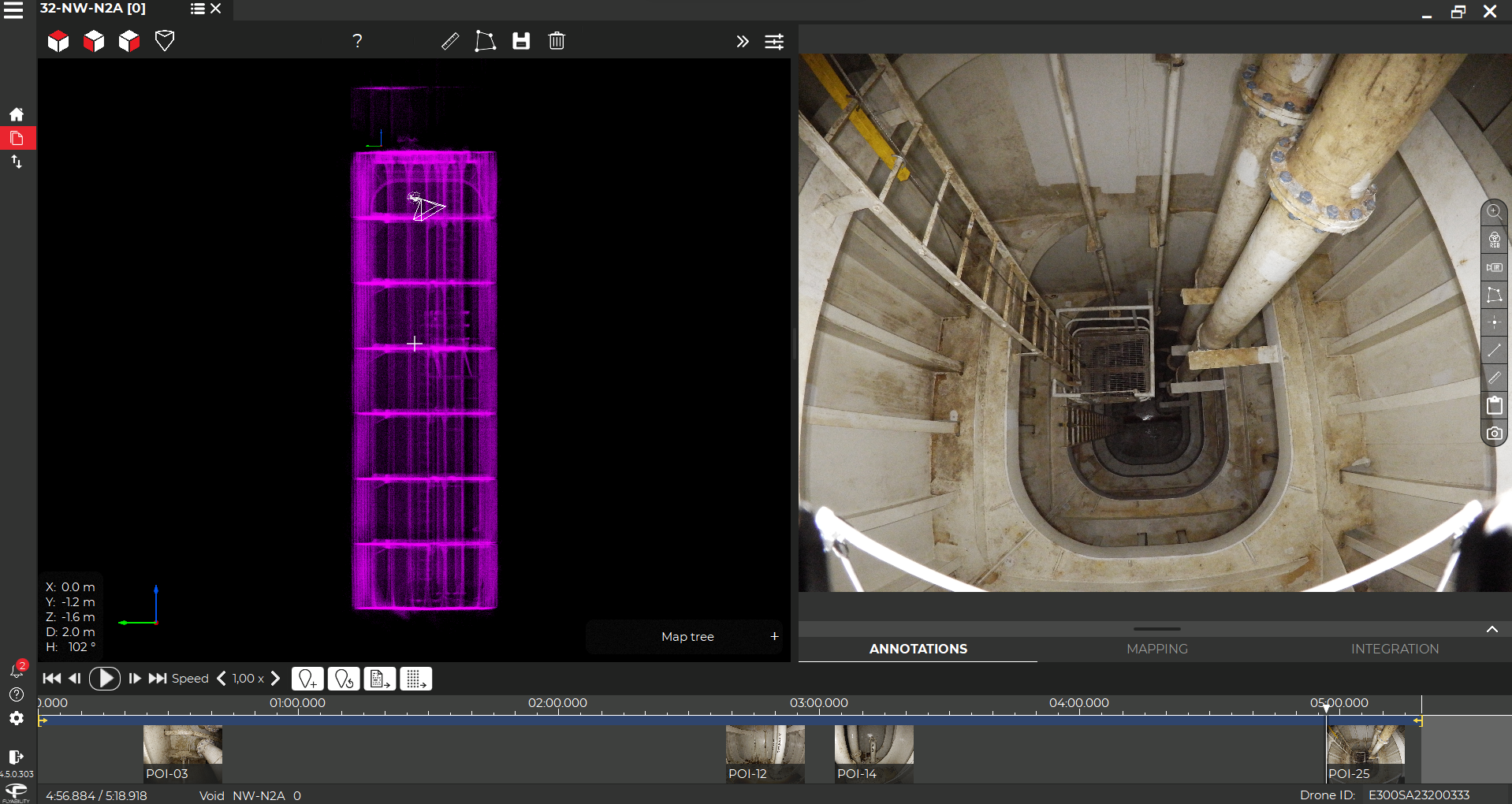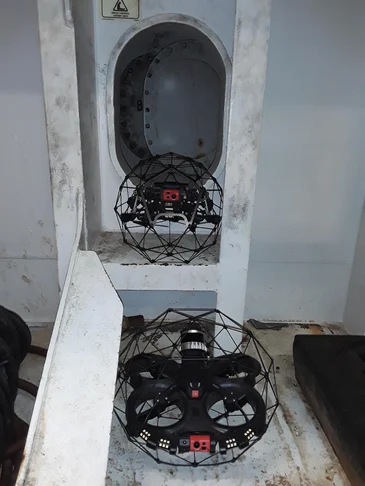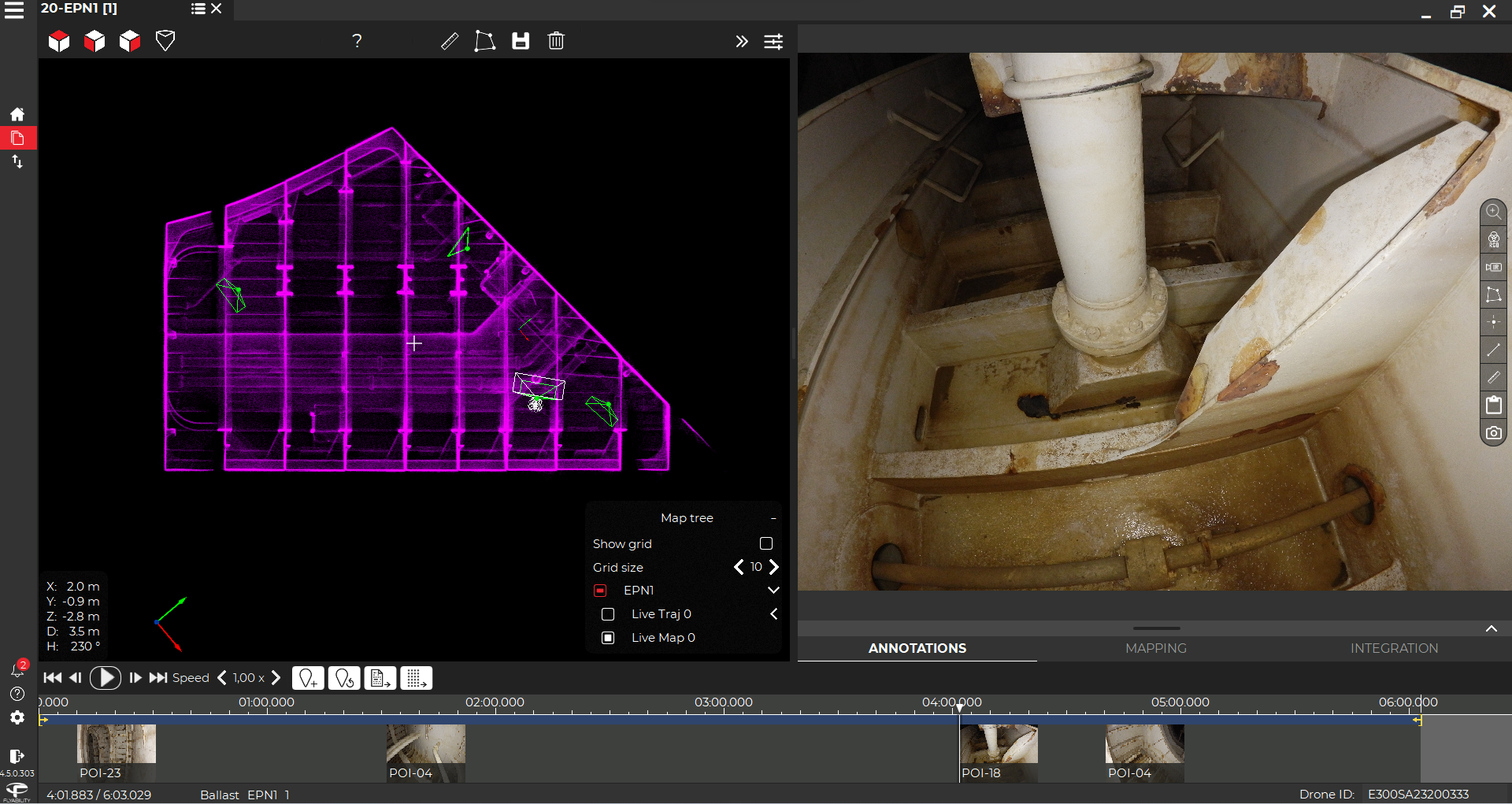Inspecting 63 tanks with 2 drones in 2 weeks
The Elios drone helped TDBR Inspections revolutionize tank inspections at the 3R-2 rig off the coast of Brazil Speed With just two staff members, the Elios 2 and Elios 3 completed inspections of 63 tanks in just 14 days. This is a massive improvement over traditional methods, which would have taken months with three or more people involved. Safety Using drones eliminated the need for personnel to enter confined spaces or work at height. This not only improved safety but also removed the requirement for special permits, making the process more efficient and less risky. Accuracy The inspection results were shared with the Class Society, which sets maritime and drilling standards. All findings from the Elios 2 and Elios 3 met the required class standards, proving the reliability of the data collected. Efficiency By using drones, the number of people on board was kept under control, allowing engineers and workers to focus on their core tasks instead of spending time on inspections. This optimized site operations and reduced downtime. Offshore operations come with unique challenges. Equipment failure or supply delays can cause costly downtime or even safety hazards. Every inch of space matters, and there's always a delicate balance between inspections, maintenance, and operational efficiency. That’s why finding smarter, safer, and faster solutions is critical for offshore sites. The 3R-2, a TLWP-type oil rig off the coast of Brazil, faces strict limitations on the number of people allowed onboard (PoB), typically around 60. These individuals must include engineers, operators, and support staff. Helicopter transport adds to the complexity, so optimizing the PoB is essential for smooth operations and staff well-being. The tanks being inspected are very high, making them difficult to inspect manually Inspection of large onboard tanks is especially challenging. It often requires multiple staff using ropes, taking several days per tank. With the facility being 10 years old, regulatory compliance is crucial. The challenge is to collect accurate inspection data without requiring large inspection teams to be on-site for extended periods. TDBR Inspections, a Brazilian drone service provider, has extensive experience using the Elios drone for complex inspections. They were approached by Raul Martini, a naval engineer from 3R Petroleum, who owns the 3R-2. The goal was to use the Elios drone to inspect the tanks and reduce the time and resources needed for such a large-scale project. The project aimed to gather visual data on the condition of large tanks, creating a comprehensive archive of images for future reference. Areas of concern could be marked for further action. With over 70 tanks on the site, the team planned to conduct multiple visits and collect data efficiently. The main advantage of using the Elios drone was the significant time and cost savings, along with simplified logistics. Unlike human entry, drones don’t require special permits, making the process faster and safer. If successful, this could lead to a long-term partnership between TDBR and 3R Petroleum for routine inspections. TDBR Inspections traveled to the 3R-2 to begin planning their flights as part of Phase 1. They conducted reconnaissance flights using the Elios 2 to identify areas of interest before entering the tanks. The inside of a ballast tank visualized with the Elios 3 After initial external flights, the team returned a month later with both the Elios 2 and Elios 3. Over 14 days, they completed 88 flights across 63 tanks, accumulating over 10 hours of flight time. Data was processed using Inspector 4 software. Visual inspections from both drones updated existing records and identified anomalies, while the Elios 3’s LiDAR created detailed 3D models of the tank interiors. These models provided clear insights into tank conditions without the need for human entry. The scale of this project was impressive—over 10 tanks inspected per day, a massive leap from traditional methods. For example, on an FSPO, tank inspections might take up to a week with 4–5 rope access technicians. With the Elios 3, it took just two people two days per tank. TDBR Inspections plans to repeat similar inspections at 3R-2 and other sites. The efficiency gains saved time and costs, optimized staff movement, and helped manage the PoB limit effectively. More importantly, the Elios drone kept personnel out of dangerous confined spaces while meeting all regulatory requirements. This solution not only enhanced safety but also addressed a real industry challenge. Discover more about the Elios 3 and its applications. 500kg/h Potato Flakes Production Line 500Kg/H Potato Flakes Production Line,Potato Flakes Processing Line,Potato Processing Line,Potato Chips Processing Line Machinery Zhucheng Lijie Food Machinery Co., Ltd. , https://www.lijiegroup.comInspecting 63 Tanks with 2 Drones in 2 Weeks
Key Benefits at a Glance
Customer Needs: Challenging Inspections for an Offshore Rig

Solution: Using Drone Inspections to Save Time
 The Elios 2 (upper) and Elios 3 (lower) outside the narrow entry for a tank
The Elios 2 (upper) and Elios 3 (lower) outside the narrow entry for a tankResults: Inspecting 63 Tanks in 88 Flights

Conclusion: A Long-Term Strategy for Faster Rig Inspections